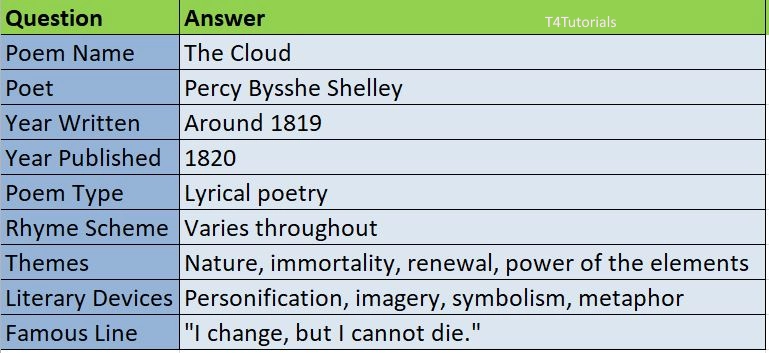Summary:
Percy Bysshe Shelley’s poem The Cloud is a lyrical exploration of the cloud’s role in the natural world, emphasizing its eternal cycle of change and renewal. The poem personifies the cloud as a living, independent force that controls the weather, brings rain, and interacts with the sun, moon, and sky. The cloud describes its continuous movement, bringing both nourishment and storms, showing its dual nature as both a giver and destroyer of life. Shelley highlights the cloud’s immortality, as it dissipates but always reforms, much like the natural cycle of water and weather. The poem conveys a sense of wonder at nature’s power and mystery, using vivid imagery and personification to bring the cloud to life. The final lines compare the cloud to a phoenix, reinforcing the idea of endless rebirth and transformation. Shelley’s The Cloud reflects the Romantic fascination with nature’s dynamic and eternal energy.
10
Score: 0
Attempted: 0/10
Subscribe
| Question | Answer |
| Poem Name | The Cloud |
| Poet | Percy Bysshe Shelley |
| Year Written | Around 1819 |
| Year Published | 1820 |
| Poem Type | Lyrical poetry |
| Rhyme Scheme | Varies throughout |
| Themes | Nature, immortality, renewal, power of the elements |
| Literary Devices | Personification, imagery, symbolism, metaphor |
| Famous Line | “I change, but I cannot die.” |